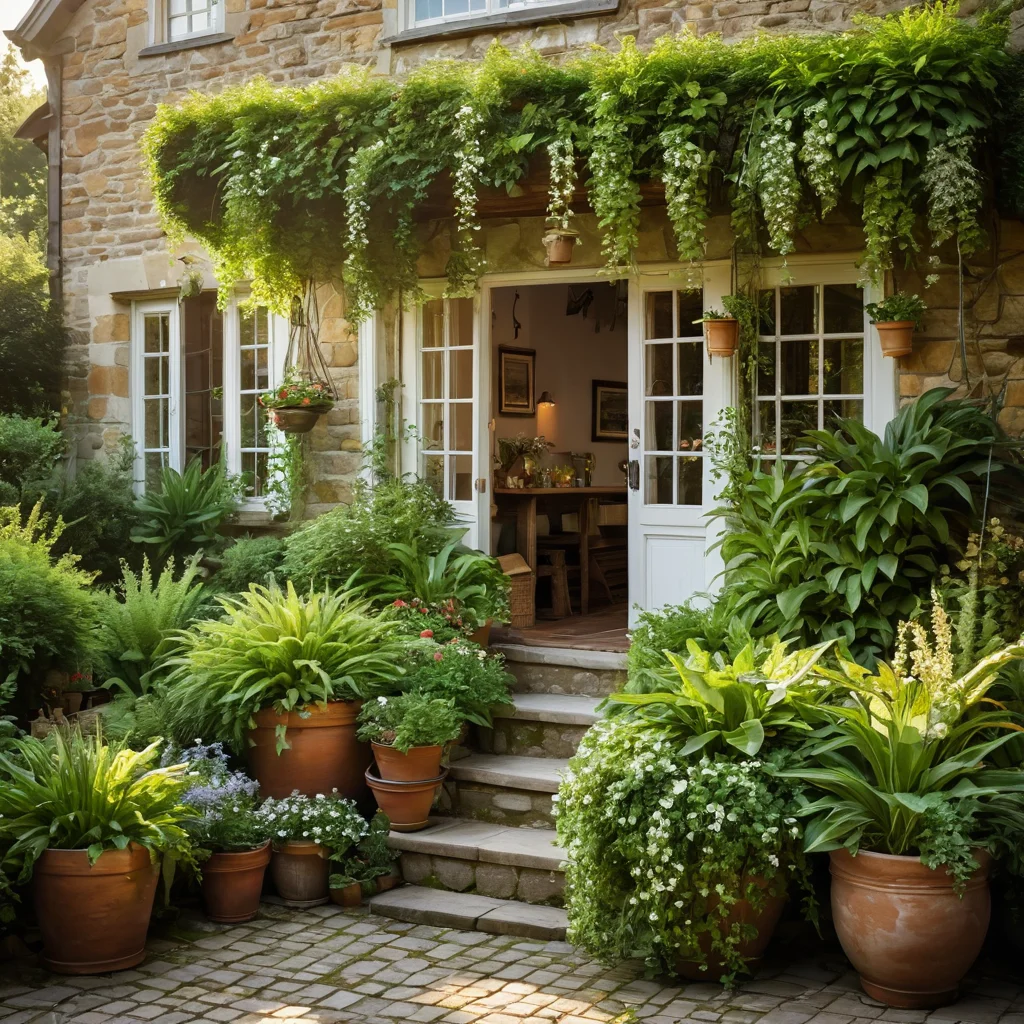Close your eyes and imagine: a gentle breeze rustles the greenery, sunbeams filter through lush cascades of flowers, and the air is filled with the delicate aroma of herbs. This is not a fairy tale, this is your garden, but with a new, exciting dimension – vertical! We are used to seeing gardens on the ground, but what if it’s time to lift beauty upwards, creating a true “hanging” garden? This is not just a trendy trend, it’s an opportunity to transform even the most modest plot, adding sophistication, volume, and unique charm. Forget about boring flowerbeds, today we will create magic, using space to the fullest!
What is a “Hanging” Garden and Why Do You Need One at Your Dacha?
A hanging garden is essentially any plant composition that is located not on the ground, but at a certain height. This can include hanging baskets suspended from tree branches or gazebos, vertical flowerbeds attached to walls, or even entire green walls that create living green tapestries. Why do we need such a wonder at our dacha? There are many reasons, and each one deserves attention.
Firstly, it’s space optimization. In small plots where every square meter counts, hanging structures allow you to use the vertical dimension. Instead of occupying precious space with flowerbeds, we create beauty upwards, leaving room for vegetable patches, a relaxation area, or a children’s playground. Believe my experience, this is a real lifesaver for miniature dachas!
Secondly, aesthetic appeal. Hanging gardens give the plot a special airiness, lightness, and dynamism. Imagine how spectacular cascading petunias or lobelia look, creating cascades of color. Or how elegant miniature conifers look in hanging baskets on the terrace. This adds that “wow factor” to your garden that sets it apart from standard solutions.
Thirdly, creating unique zones. With the help of hanging structures, you can zone the space, for example, to fence off a cozy corner for tea drinking or create a picturesque background for a barbecue area. They can become an accent at the entrance to the house, decorate a gazebo, terrace, or even just a fence.
Fourthly, ease of care. Some plants, especially those prone to diseases or attracting pests when in close contact with the soil, feel much better when suspended. Additionally, watering and caring for them often becomes easier as you don’t have to bend down.
Finally, it’s limitless scope for creativity. A hanging garden is the perfect platform for realizing the boldest design ideas. You can create compositions from different plants, combine them with decorative elements, and experiment with shapes and materials. It’s your personal canvas, where greenery and flowers are your paints.
A hanging garden is not just a nod to fashion, but a smart and beautiful solution for any dacha, allowing you to fully unlock the potential of the plot and make it truly magical.
Types of Hanging Gardens: From Vertical Flowerbeds to Green Walls
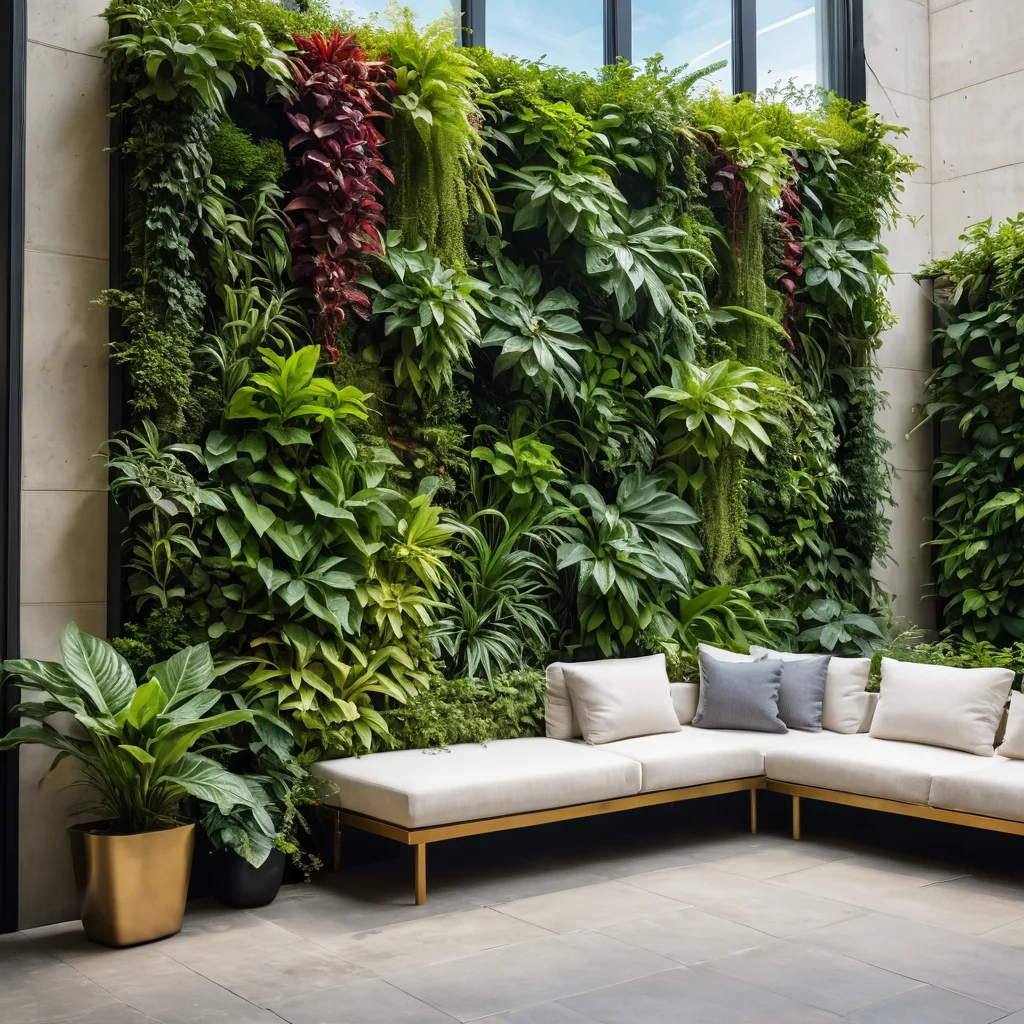
The world of hanging gardens is surprisingly diverse. When we talk about vertical gardening, we can mean a whole spectrum of solutions – from simple and accessible to complex and capital. Let’s explore the main types so you can choose what’s perfect for you.
1. Hanging Pots and Containers:
- Classic Hanging Baskets: This is perhaps the most common and affordable option. They come in a wide variety of shapes, sizes, and materials – ceramic, plastic, metal, wicker. They can be hung on brackets, hooks, special supports, tree branches, or balcony railings. Ideal for trailing plants, annual flowers, and herbs.
- Pots on Chains or Ropes: Similar to classic hanging baskets, but often with a simpler design. It’s important to choose strong chains or ropes that can support the weight of wet soil and the plant.
- DIY Hanging Structures: Here, the scope for imagination is endless! Old watering cans, teapots, buckets, even shoes – anything can become an original home for plants. The main thing is to ensure drainage holes and a secure suspension.
2. Vertical Flowerbeds and Modular Systems:
- Modular Structures: These are ready-made systems made of plastic or metal, consisting of several tiers or sections where plants are planted. They can be freestanding or wall-mounted. Convenient for creating dense green compositions, such as strawberries or salads.
- Pocket Vertical Gardens: Often made of dense fabric (like felt) with many pockets. Plants are planted directly into these pockets. Such systems are great for decorating walls, fences, and balconies. Care requires neatness to avoid wetting the wall behind the structure.
- Pallet Flowerbeds: An old wooden pallet converted into a vertical flowerbed is a budget-friendly and stylish solution. It can be placed vertically, filling the space between the boards with soil and planting plants.
3. Green Walls (Living Walls):
- Modular Green Walls: These are more complex structures, often requiring an irrigation system. They consist of modules or panels into which plants are planted. They can be both indoor and outdoor. They create the effect of a solid green carpet.
- Rolled Green Walls: A less capital-intensive option, consisting of a material with pockets or cells for plants. They are easier to install and remove.
- Elements of Green Walls: Sometimes, a green wall is understood as simply densely arranged hanging pots or baskets that create the appearance of a single green surface.
4. Hanging Compositions of Large Elements:
- Hanging Boxes and Baskets: Large wooden boxes or wicker baskets, suspended by strong chains or ropes, can form the basis for mini-gardens with several types of plants.
- “Flying” Beds: An unusual technique where large containers with soil and plants are suspended at different heights, creating the illusion of floating in the air. Requires very secure fastening.
When choosing the type of hanging garden, consider:
- The size of your plot and the availability of space for installing structures.
- The desired effect – whether you want to create bright color spots, lush green waterfalls, or a strict geometric composition.
- Your financial capabilities and readiness for complex installation work.
- The type of plants you plan to grow.
Don’t be afraid to experiment! Sometimes the most unexpected solutions turn out to be the most effective.
Choosing the Right Plants for Hanging Structures: Sun, Shade, and Watering
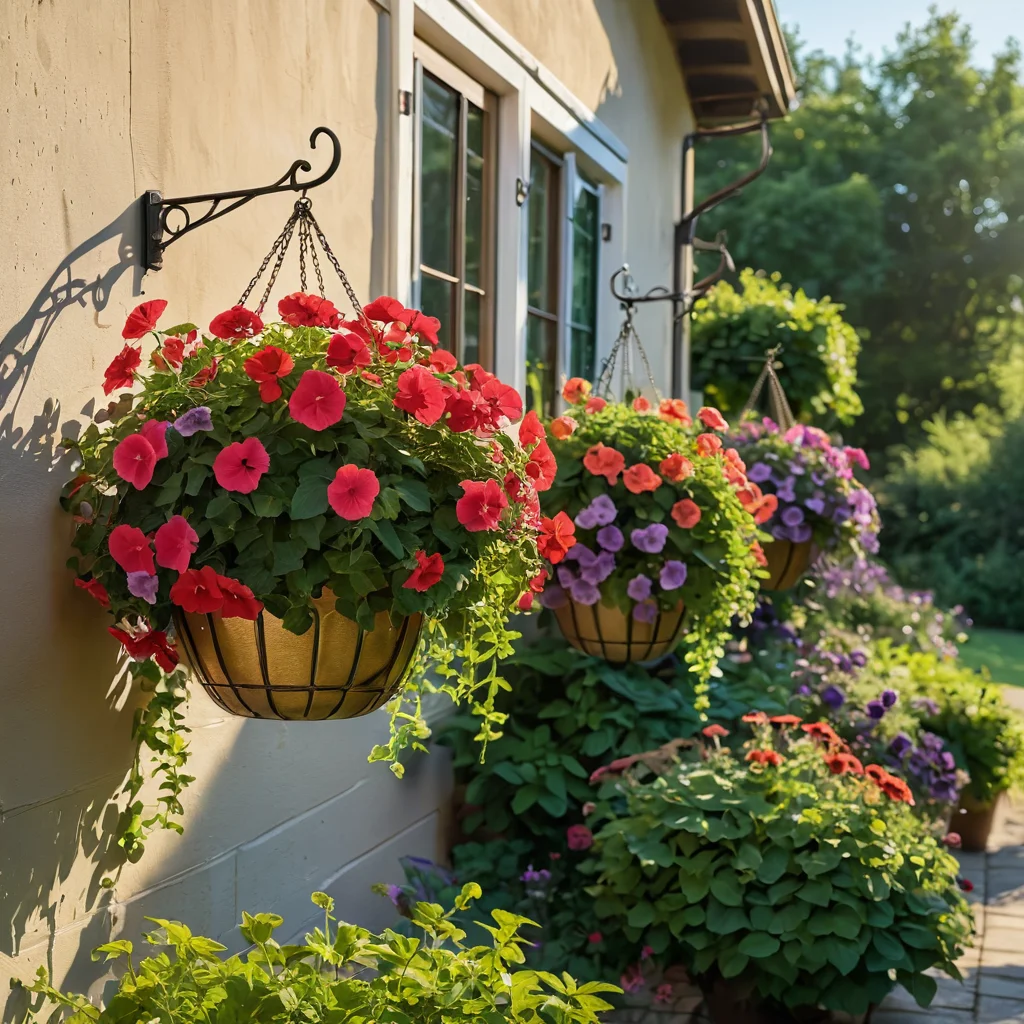
The heart of any hanging garden is, of course, the plants. The choice of plants determines how lush, long-blooming, and healthy your vertical masterpiece will be. There are no universal tips here, as much depends on the conditions of your plot, but there are key principles that I always follow.
1. Consider Lighting:
- Sunny Spots: If your hanging garden will be in direct sunlight, choose drought-tolerant and sun-loving plants. Excellent choices include:
- Petunias (trailing varieties): The true queens of hanging baskets! They bloom abundantly all summer, creating bright waterfalls.
- Lobelia: Small flowers that form airy blue, purple, or white clouds.
- Verbena: Unpretentious, blooms for a long time and in variety.
- Dichondra ‘Silver Falls’: A magnificent trailing plant with silvery leaves, creating stunning cascades.
- Succulents: Many types of succulents thrive in the sun and require minimal watering.
- Nasturtium: Bright flowers and round leaves that hang beautifully.
- Portulaca: Flowers that open in the sun, creating bright carpets.
- Partial Shade: For areas where the sun is only present in the morning or evening, more shade-tolerant varieties are suitable:
- Fuchsia: Elegant flowers that love partial shade and moisture.
- Begonia: Especially trailing varieties, creating lush cascades.
- Impatiens: Bloom abundantly, prefer diffused light.
- Pansies (Viola): Good for spring and autumn compositions.
- Hosta: Decorative not for its flowers, but for its beautiful leaves, grows well in partial shade.
- Ferns: Create lush green mass, love moisture and shade.
- Shade: If the spot is completely dark, the choice is limited, but even here you can find interesting options, mostly ornamental foliage plants:
- Ivy: An evergreen vine that looks great in hanging baskets.
- Coleus: Bright foliage in a wide variety of colors.
- Ornamental grasses (some varieties): For example, sedges.
2. Consider Watering Needs:
- Frequent Watering: Plants in hanging baskets dry out faster than those in the ground. Therefore, those that love moisture (fuchsias, begonias, impatiens) will require more careful care.
- Infrequent Watering: If you cannot devote much attention to watering, choose drought-tolerant species: succulents, portulaca, verbena, nasturtium. You can use special moisture-retaining additives in the soil.
- Automatic Watering Systems: For large hanging gardens or if you are often away, consider installing drip irrigation systems.
3. Container Size and Shape:
- Depth: For plants with a developed root system (e.g., some petunia varieties or bushy plants), choose deeper hanging baskets. For trailing annuals and herbs, shallow but wide containers are often sufficient.
- Volume: The larger the volume of the hanging basket, the longer the soil will remain moist.
4. Combining Plants:
- “Star” and “Accompaniment”: In one hanging basket, you can combine one spectacular trailing plant (“star”) with several smaller or upright ones (to create volume).
- Contrast of Textures and Colors: Play with the combination of different leaf shapes (cut, round, smooth) and shades.
- Unified Style: Sometimes it’s better to create a composition of plants of the same species, but different colors or sizes, to achieve maximum harmony.
5. Wind Resistance:
- Resilient Plants: If the location is windy, choose plants with strong stems and not too large, dense leaves. Avoid delicate, fragile flowers.
- Low-growing varieties: They suffer less from the wind.
Remember that even the most beautiful plants require care. Choose them considering your capabilities and conditions, and your hanging garden will delight you with its beauty!
Materials for a Hanging Garden: From Plastic Pots to Wooden Boxes
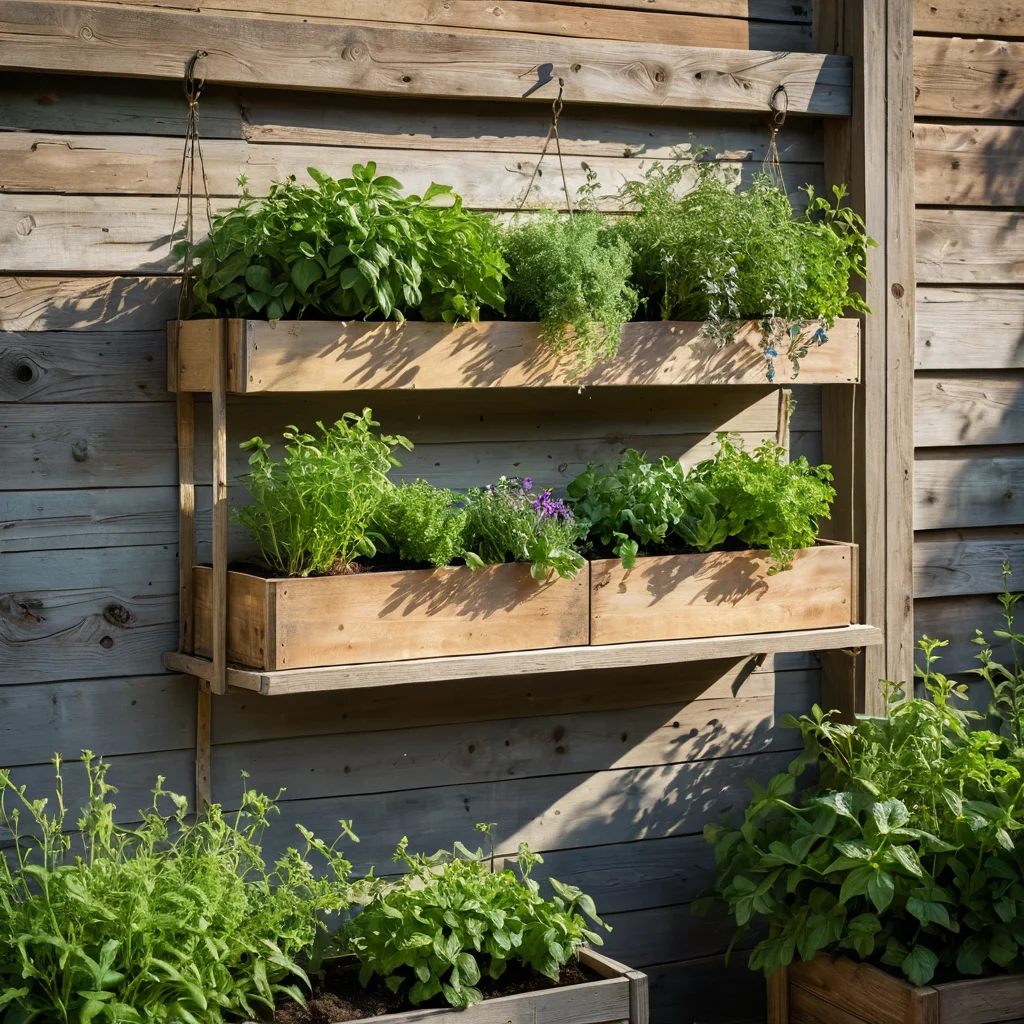
The choice of materials for a hanging garden is not only a matter of aesthetics but also practicality, durability, and, of course, budget. Today, the market offers a wide range of options, and each has its pros and cons. I always try to approach material selection comprehensively, thinking not only about beauty but also about how the structure will serve you for years to come.
1. Plastic:
- Pros:
- Lightweight: Plastic hanging baskets and containers are very light, making them easy to hang and move.
- Durability: They do not rust, do not rot, and are resistant to temperature changes and moisture.
- Variety: A huge selection of shapes, colors, and sizes. They often imitate ceramic, metal, or even wood.
- Price: Usually the most affordable.
- Cons:
- Aesthetics: Cheap plastic can look unattractive and fade quickly in the sun.
- Brittleness: Some types of plastic can crack in frost.
- Environmental friendliness: Not all plastics are safe for the environment.
2. Ceramic and Terracotta:
- Pros:
- Aesthetics: Always look noble and stylish, giving the garden a classic charm.
- Breathability: Clay pots allow roots to “breathe”.
- Environmental friendliness: Natural material.
- Cons:
- Brittleness: Ceramic breaks easily.
- Weight: Heavy, requires very secure fastening.
- Price: Usually more expensive than plastic.
- Frost resistance: Most ceramic pots cannot withstand winter outdoors; they need to be brought inside.
3. Metal (forged, galvanized):
- Pros:
- Strength and durability: Especially forged elements look very impressive and last for decades.
- Style: Forged stands, brackets, baskets are true works of art.
- Galvanized containers: Practical, resistant to corrosion.
- Cons:
- Price: Forged items are expensive.
- Weight: Heavy.
- Heating: Metal heats up significantly in the sun, which can damage plant roots. Additional insulation or choosing heat-resistant plants is required.
- Rust: Ordinary uncoated metal is prone to corrosion.
4. Wood:
- Pros:
- Naturalness and eco-friendliness: Creates a sense of coziness and unity with nature.
- Decorative qualities: Wooden boxes, barrels, shelves look very natural and stylish.
- DIY potential: Easy to make yourself from boards, pallets, branches.
- Cons:
- Short lifespan: Wood is prone to rot, moisture, and insects. Requires regular treatment with protective agents (antiseptics, varnishes, paints).
- Weight: Depends on the type of wood and the size of the structure.
- Requires maintenance: Periodic renewal of protective coating.
5. Woven Materials (rattan, willow, jute):
- Pros:
- Lightness and airiness: Create very delicate and elegant compositions.
- Natural look: Fit perfectly into any garden style.
- Breathability: Plant roots get access to air.
- Cons:
- Short lifespan: Especially natural materials break down quickly under the influence of moisture and sun. Artificial rattan is more durable.
- Requires protection: Often, a liner made of film or other material is placed inside woven baskets to prevent soil from falling out and moisture from damaging the weave.
- Price: Quality woven items can be expensive.
6. Other Unusual Materials:
- Glass bottles and jars: Can be used to create terrariums or as decorative elements.
- Old car tires: Painted and hung, they can become original hanging baskets.
- Mesh structures: Metal or plastic mesh, from which volumetric baskets are formed.
Tips for Choosing:
- Fastening: Ensure that the chosen material and suspension system can withstand the weight of the soil filled with moisture and the plant itself, as well as wind loads.
- Drainage: Any container must have drainage holes to remove excess water.
- Combination: Don’t be afraid to combine different materials. For example, forged brackets and simple plastic hanging baskets, or a wooden box with metal elements.
- Style Consistency: Choose materials that harmonize with the overall style of your garden and house.
Remember that DIY structures made from improvised materials often look the most organic and heartfelt. Don’t be afraid to experiment and give old things a second life!
How to Make a Hanging Garden with Your Own Hands: A Step-by-Step Guide for Beginners
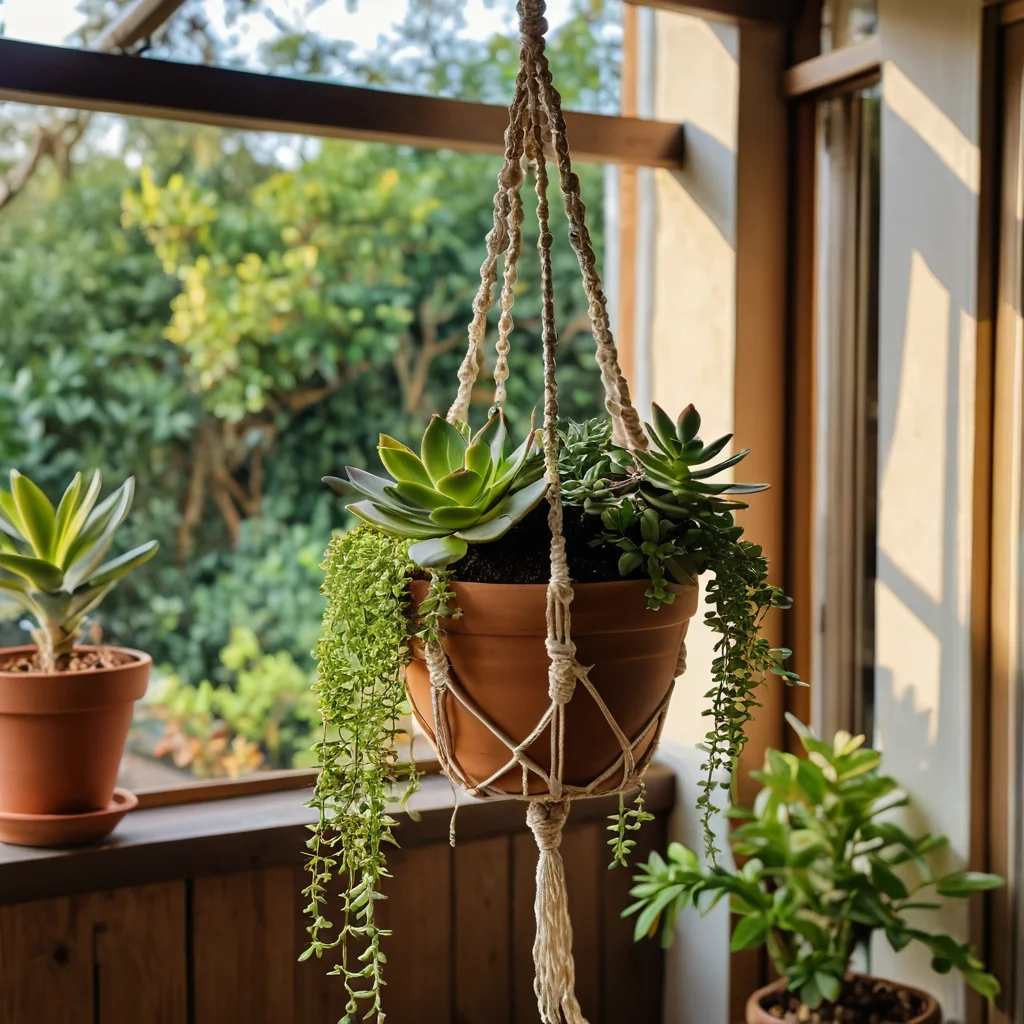
Creating a hanging garden with your own hands is a fascinating activity that brings immense satisfaction. I remember the first time I made a hanging basket from an old watering can – it was a whole adventure! Today, I will share with you a simple but very effective idea: a hanging basket made from a wooden box. It’s affordable, stylish, and allows you to create a real mini-garden.
Step 1: Prepare Materials and Tools
What we will need:
- Wooden box: A small box, for example, from fruits or vegetables. You can buy a ready-made one or make it yourself from boards. It’s important that the wood is strong enough.
- Fasteners: Four sturdy rings with screws or hooks, or strong hooks.
- Chains or strong rope: The length depends on where you plan to hang the box.
- Plastic film or geotextile: To protect the wood from moisture and prevent soil from spilling out.
- Drainage material: Expanded clay, gravel, broken brick.
- Soil: Suitable for your chosen plants.
- Plants: Those we discussed in the previous section.
- Tools: Screwdriver (or screwdriver), scissors, possibly sandpaper for processing the wood.
Step 2: Prepare the Box
- Wood treatment (optional): If the box is new, you can age it slightly with sandpaper or stain. An old box can be varnished or painted to extend its lifespan.
- Reinforcement (if necessary): If the box seems flimsy, you can further reinforce the corners with screws.
- Attaching rings: On each of the four sides of the box, near the top edge, screw in one ring. Place them symmetrically so that the suspension is even.
Step 3: Waterproofing
- Interior lining: Line the bottom and sides of the box inside with plastic film or geotextile. Secure the material thoroughly so it doesn’t slip. The edges of the film can be folded and fixed with a stapler or small nails. The main task is to protect the wood from constant contact with moist soil.
- Drainage holes: Make several small holes in the film at the bottom of the box to drain excess water.
Step 4: Filling the Box
- Drainage layer: Pour a layer of drainage material (expanded clay, gravel) 2-3 cm thick at the bottom of the box. This will prevent waterlogging at the roots.
- Soil: Fill the box with prepared soil, leaving 2-3 cm from the top edge.
Step 5: Planting Plants
- Composition: Arrange the plants in the box, considering their growth habit and tendency to trail. Usually, a taller plant is placed in the center or space is left for it, and trailing varieties are planted around the edges.
- Planting: Carefully plant the plants, trying not to damage the roots. After planting, lightly compact the soil.
- Watering: Water the plants thoroughly after planting.
Step 6: Hanging
- Attaching chains/rope: Thread the chains or ropes through the rings on the box. Gather them at the top and secure them to a sturdy hook, beam, or special support. Ensure the box hangs evenly and securely.
- Check: Gently shake the structure to ensure its strength.
More DIY Ideas:
- Hanging basket from an old watering can: Drill drainage holes in the bottom, attach rings or hooks to the sides, and hang.
- Vertical flowerbed from a plastic bottle: Cut a large bottle horizontally or vertically, make drainage holes, attach ropes, and hang.
- Coconut fiber flower ball: Ready-made balls that need to be filled with soil and planted. They are lightweight and very effective.
The most important thing is not to be afraid to try! Even if the first attempt isn’t perfect, you’ll gain valuable experience and, most likely, a beautiful result that will delight you and your guests.
Placement of Hanging Gardens: Where They Look Best and How to Secure Them
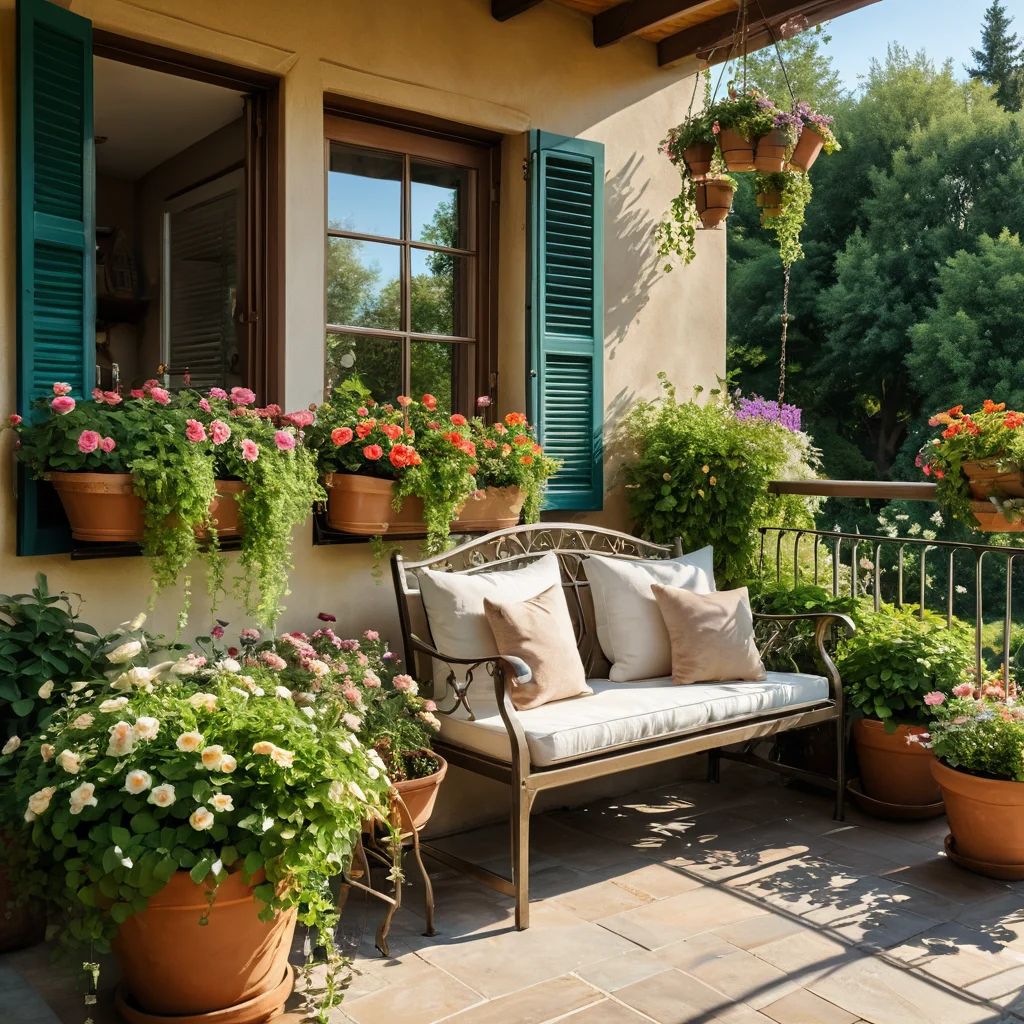
Proper placement of a hanging garden is half the battle. Even the most beautiful plants and exquisite hanging baskets won’t look their best if hung haphazardly. You need to consider not only aesthetics but also practicality, safety, and the specific needs of the plants. Believe my experience, smart placement can completely transform your plot!
1. Where is the Best Place to Position Hanging Gardens?
- Entrance Area: Hanging baskets on either side of the entrance door create a welcoming atmosphere and decorate the main entrance.
- Gazebo or Veranda: Suspended from the ceiling or beams, they create coziness, shade, and add vertical greenery to the relaxation area. Ideal for plants that love partial shade.
- Terrace: They will decorate railings, posts, or awnings, adding color and life.
- Trees: Old, sprawling trees are an excellent base for hanging baskets. This gives the garden a fairy-tale look.
- Balconies and Loggias: Especially relevant for city dwellers, but even at the dacha, balconies can be turned into blooming corners.
- Fences and Railings: Vertical flowerbeds or hanging baskets attached to a fence can hide its flaws or, conversely, become its main decoration.
- Walls of the House or Outbuildings: Green walls, modular systems, or just a few hanging baskets can liven up blank walls.
- Relaxation Areas: Hanging structures can help create cozy “green corners” and add privacy.
2. Important Factors When Choosing a Location:
- Lighting: Consider the plants’ needs for light (sun, partial shade, shade). You cannot place a sun-loving petunia in deep shade, or it won’t bloom.
- Wind Protection: Strong gusts of wind can damage plants and even dislodge hanging structures. Choose locations with natural protection (e.g., near a house wall, under an awning), or use more resilient plants and secure fastenings.
- Accessibility for Care: The location should be easily accessible for watering, fertilizing, pruning, and other procedures. Don’t hang them too high if you don’t plan to use a ladder.
- Visibility: Position hanging gardens so they are clearly visible and create the desired effect. They should harmonize with the overall landscape.
- Safety: Ensure that the structures are securely fastened and do not pose a danger to people or animals, especially if they are located above walkways or relaxation areas.
3. How to Securely Fasten a Hanging Garden?
This is perhaps the most critical aspect. Secure fastening is the key to your safety and the preservation of your plants.
- Choosing the Fastening Point:
- Hooks and Brackets: The most common option. For hanging baskets on the walls of a house, gazebo, or veranda. Choose sturdy metal brackets designed for significant weight. They should be attached to load-bearing structures (beams, walls) using anchor bolts or reliable screws.
- Beams and Overhangs: A reliable option for hanging from the ceiling of a gazebo, awning, or veranda. Special hanging hooks can be used.
- Tree Branches: If you are hanging baskets on a tree, choose strong, thick branches. Wrap the rope or chain around the branch through a protective pad (e.g., a piece of rubber or fabric) to avoid damaging the bark. Do not hang excessively heavy structures on young trees.
- Supports and Arches: Special garden supports or decorative arches may have built-in fasteners or allow for the installation of hooks.
- Fences: For light structures, special clamps or hooks that attach to the top edge of the fence can be used. For heavier ones, drill holes and attach brackets.
- Fastening Materials:
- Metal hooks and brackets: Choose galvanized or forged ones, rated for the appropriate load.
- Chains: Strong, preferably galvanized or stainless steel.
- Ropes and cables: Use strong synthetic ropes (nylon, polypropylene) or metal cables. Avoid natural materials (cotton, jute), as they rot quickly and lose strength.
- Anchor bolts, screws: Select based on the wall material (concrete, brick, wood).
- Load Calculation:
- Weight of soil: Wet soil is very heavy. Consider this when choosing fasteners.
- Weight of hanging basket and plants: The larger the container, the heavier it is.
- Weight of water: After watering, the weight of the structure increases.
- Wind load: Windy weather creates additional stress.
General Recommendations:
- Excessive safety margin: Always choose fasteners with a safety margin. Better to be safe than sorry.
- Regular inspection: Periodically inspect the fastenings, especially after strong winds or rain.
- Using multiple fastening points: For large and heavy structures (e.g., green walls or large boxes), use multiple fastening points to distribute the load evenly.
Thoughtful placement and secure fastening are the keys to ensuring that your hanging garden is not only a beautiful but also a safe element of your dacha decor.
Caring for a Hanging Garden: Watering, Fertilizing, and Pest Protection
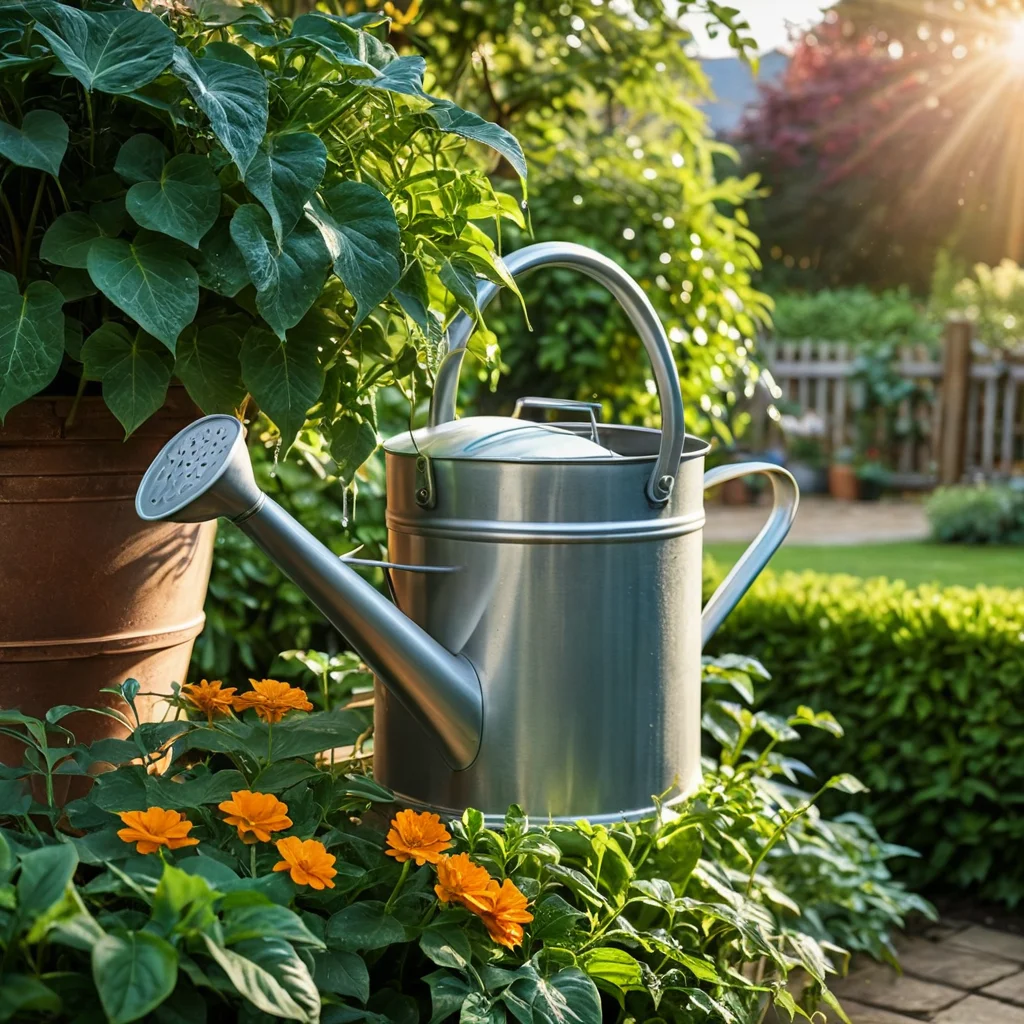
Hanging gardens, for all their beauty, require a little more attention than plants growing in open ground. This is primarily due to the limited volume of soil and its rapid drying. But don’t be discouraged! Proper care is not difficult, and the result is worth it. Let me share my secrets that will help your vertical wonder thrive.
1. Watering: The Queen of All Procedures
- Frequency: The most important rule is regularity. In hot weather, especially in the sun, hanging baskets may require watering daily, and sometimes twice a day. In cool weather – once every 2-3 days.
- How to Determine the Need for Watering?
- Checking the soil: Touch the soil with your finger to a depth of 2-3 cm. If it’s dry, it’s time to water.
- Weight of the hanging basket: Over time, you will learn to determine by weight whether the pot needs watering. Dry soil is much lighter than wet soil.
- Plant condition: Signs of wilting leaves are a clear signal. But it’s better not to let it get to that point.
- Watering Technique:
- Abundantly, but not excessively: Pour water until it starts to drain from the drainage holes. This means the entire soil ball is saturated with moisture.
- Avoid waterlogging: Ensure that excess water drains freely. If the hanging basket is in a decorative saucer, drain the water from it after 15-20 minutes.
- Time of watering: The best time is early morning or evening, when the sun is not as active. This helps prevent leaf scorch and reduces evaporation.
- Use settled water: Cold tap water can cause stress to plants.
- Special Cases:
- Spraying: Periodically, it is beneficial to spray plants with water, especially in hot, dry weather. This washes off dust and moisturizes the leaves.
- Automatic watering systems: If you are often away or want to simplify care as much as possible, consider installing drip irrigation.
2. Fertilizing: Nutrition for Lush Blooming
- Why is it important? The limited volume of soil is quickly depleted. Regular fertilization is necessary for abundant flowering and healthy growth.
- What to fertilize with?
- Complex fertilizers: Use liquid complex fertilizers for flowering plants. They contain all the necessary macro- and micronutrients.
- Fertilizers for specific plants: There are specialized formulations for petunias, fuchsias, and begonias.
- Organic fertilizers: Infusion of cow dung or bird droppings (diluted!), vermicompost.
- How often?
- During active growth and flowering (spring-summer): Every 1-2 weeks, following the instructions on the fertilizer packaging.
- Do not fertilize a sick or weakened plant.
- Do not over-fertilize! It’s better to under-fertilize than over-fertilize. Excess fertilizer can be harmful.
3. Pest and Disease Control
- Prevention is the best remedy:
- Regular inspection: Carefully inspect plants (especially the underside of leaves) for aphids, spider mites, and whiteflies.
- Cleanliness: Remove dried leaves and flowers to prevent the development of fungal diseases.
- Proper watering: Avoid both drying out and overwatering – both conditions weaken the plant.
- Good air circulation: Do not overcrowd plantings.
- Control:
- Folk remedies: Soapy water, garlic infusion, or onion peel infusion are often effective against aphids and spider mites in the early stages.
- Biological insecticides: Safe for humans and the environment, based on bacteria or fungi.
- Chemical insecticides: Use as a last resort, strictly following instructions and wearing gloves, preferably in the evening.
4. Pruning and Shaping
- Pinching: Pinch young shoots of trailing plants to stimulate branching and form a lush cascade.
- Sanitary pruning: Removal of dry, damaged, diseased branches and leaves.
- Deadheading: Removing faded flowers stimulates the formation of new buds and prolongs flowering.
5. Winter Care (for perennials)
- Moving indoors: Heat-loving perennials (fuchsias, geraniums) need to be moved indoors for the winter to a cool, bright place (greenhouse, insulated balcony, basement). Reduce watering and stop fertilizing.
- Mulching: Some frost-resistant plants can be left for the winter by insulating the hanging basket or covering it.
Caring for a hanging garden is not a chore, but a pleasant ritual that allows you to be closer to nature and create beauty with your own hands. A little attention, and your vertical compositions will delight you with their splendor!
Common Mistakes When Creating and Caring for a Hanging Garden: How to Avoid Disappointment
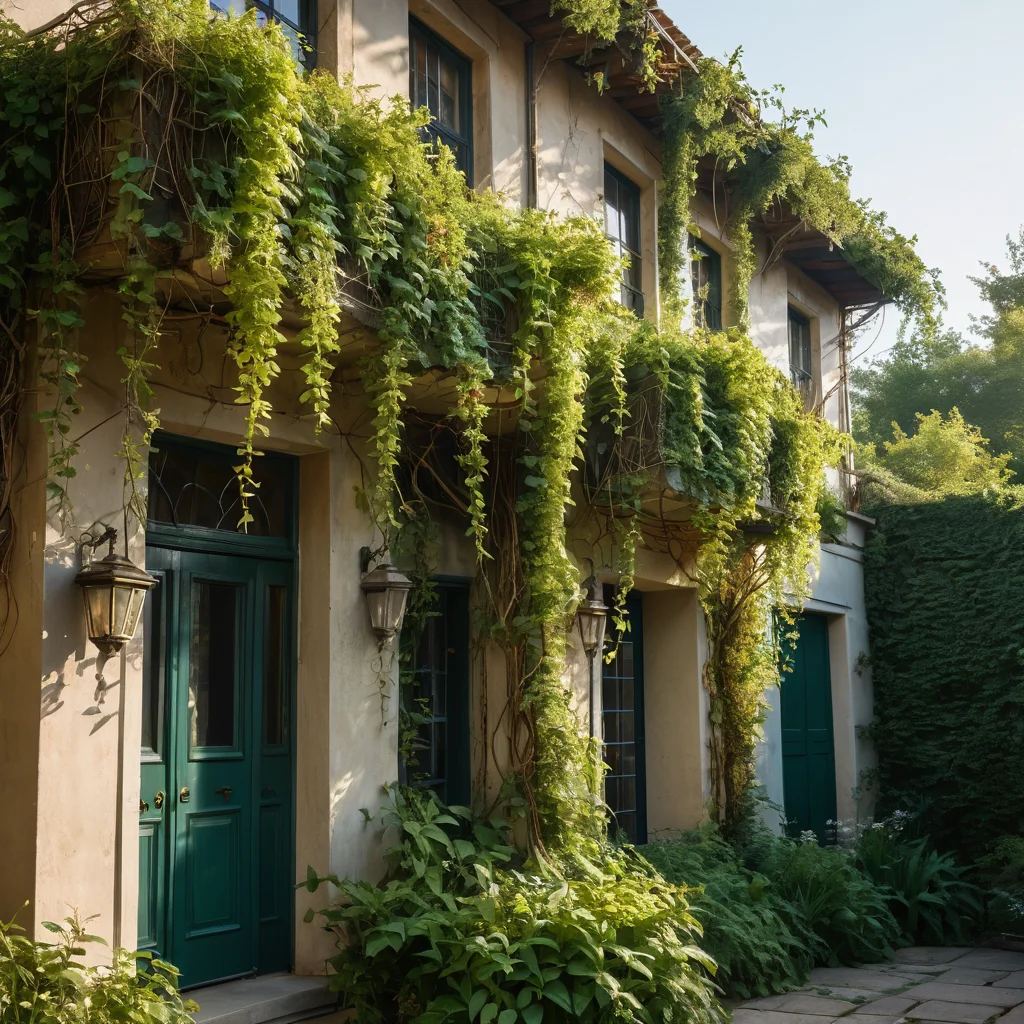
Creating a hanging garden is a process where, like in any creative endeavor, mistakes are possible. But knowing about them will help you avoid them and get the most enjoyment from the result. I also stumbled at times, but experience is the best teacher. Let’s look at the most common pitfalls so that your “hanging” oasis delights you rather than disappoints you.
1. Incorrect Location Choice:
- Mistake: Choosing a location without considering the plants’ light requirements. For example, planting sun-loving petunias in deep shade or shade-loving ferns in scorching sun.
- Consequences: Poor flowering, leggy growth, leaf scorch, wilting.
- How to avoid: Carefully study the light requirements of your chosen plants and find a suitable location for them. Don’t forget that light intensity changes throughout the day and season.
2. Unreliable Fastening:
- Mistake: Using weak ropes, rusty hooks, or improper fastening to a wall or tree.
- Consequences: Falling hanging baskets, injuries, plant death.
- How to avoid: Always choose fasteners with a large safety margin. Use only reliable materials (galvanized hooks, cables, anchor bolts). When fastening to trees, use protective pads to avoid damaging the bark. Periodically check the condition of the fasteners.
3. Soil Drying Out or Waterlogging:
- Mistake:
- Drying out: Infrequent watering, too small a hanging basket volume, hot weather.
- Waterlogging: Too frequent watering, lack of drainage holes, water stagnation in the saucer.
- Consequences:
- Drying out: Wilting, leaf scorch, bud and flower drop, plant death.
- Waterlogging: Root rot, development of fungal diseases, yellowing leaves.
- How to avoid: Regularly check soil moisture. Water thoroughly, but allow the top layer to dry out between waterings. Ensure drainage holes are present.
4. Incorrect Plant Selection:
- Mistake:
- Incompatibility: Planting plants with different requirements for light, moisture, and nutrition in the same hanging basket.
- Too large size: Choosing plants that will grow too large for the selected container.
- Unsuitable growth habit: Planting upright plants where a cascade is needed.
- Consequences: Plants inhibit each other, the composition looks untidy, and the appearance suffers.
- How to avoid: Plan the composition in advance. Study the characteristics of the plants. Combine a “star” (a spectacular trailing plant) with “fillers” (more compact or upright species).
5. Ignoring Fertilization:
- Mistake: Relying solely on the nutrients initially added to the soil.
- Consequences: Pale leaves, poor flowering, weakened plants.
- How to avoid: During the active growth and flowering period, regularly (every 1-2 weeks) fertilize plants with liquid fertilizers.
6. Lack of Pruning and Shaping:
- Mistake: Allowing plants to grow uncontrollably without removing dried parts.
- Consequences: Loss of decorative appeal, overcrowding, diseases.
- How to avoid: Regularly pinch young shoots for better branching, remove faded flowers and dried leaves.
7. Using Low-Quality Soil:
- Mistake: Using garden soil, which is too dense, quickly compacts, and poorly drains air and water.
- Consequences: Impaired root development, waterlogging, diseases.
- How to avoid: Use light, nutritious, well-draining soil mixes designed for container growing. You can add perlite or vermiculite to improve the structure.
8. Neglecting Winter Care (for perennials):
- Mistake: Leaving heat-loving perennials to overwinter outdoors or not providing them with proper care during their dormant period.
- Consequences: Plant death.
- How to avoid: Take care of a wintering place for perennial plants in advance. Move them indoors, reduce watering and fertilization.
A hanging garden is a wonderful opportunity to express your creativity and decorate your dacha. The main thing is to approach its creation with love, attention, and knowledge. Don’t be afraid to learn from mistakes, because they are what make us more experienced and wiser!
